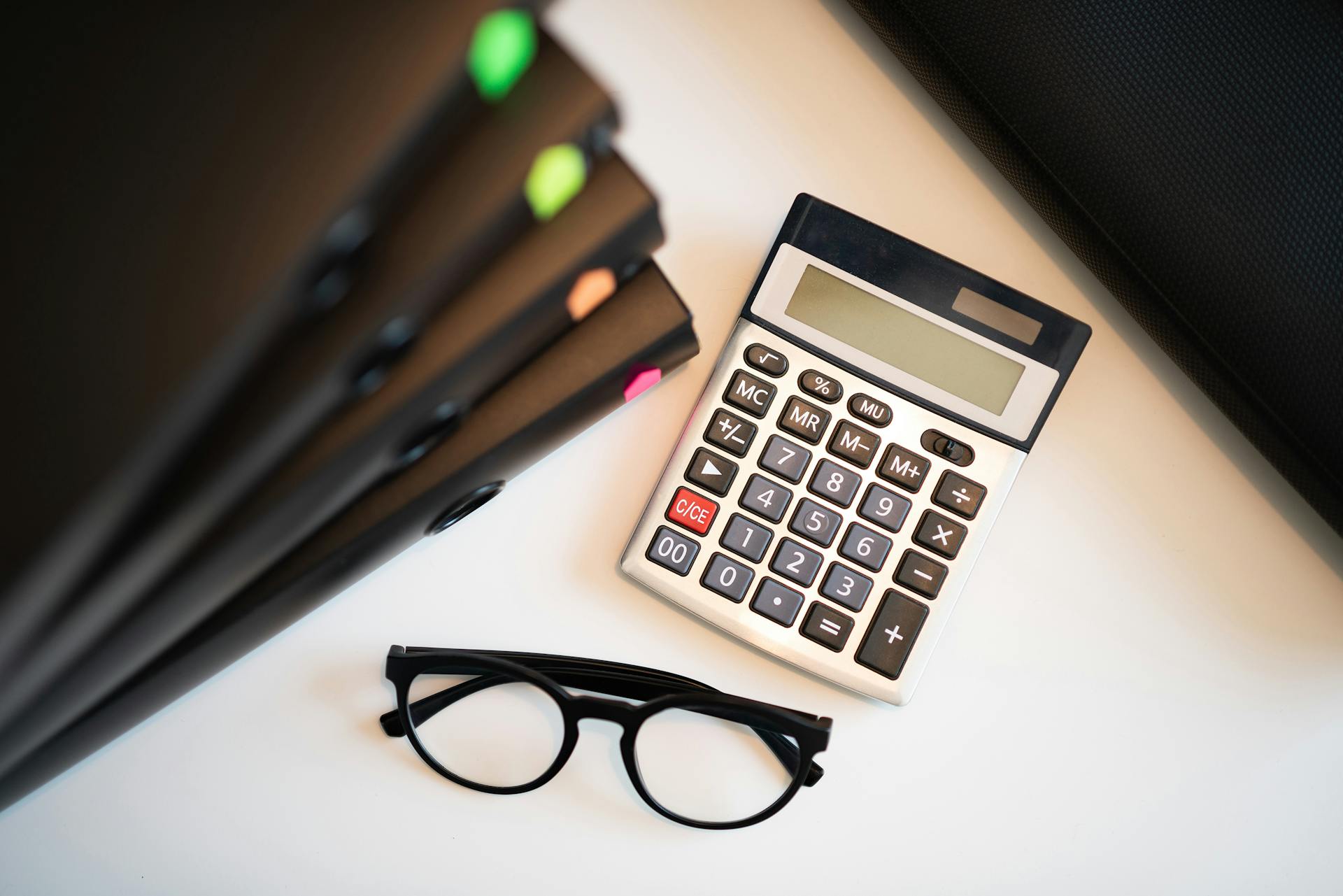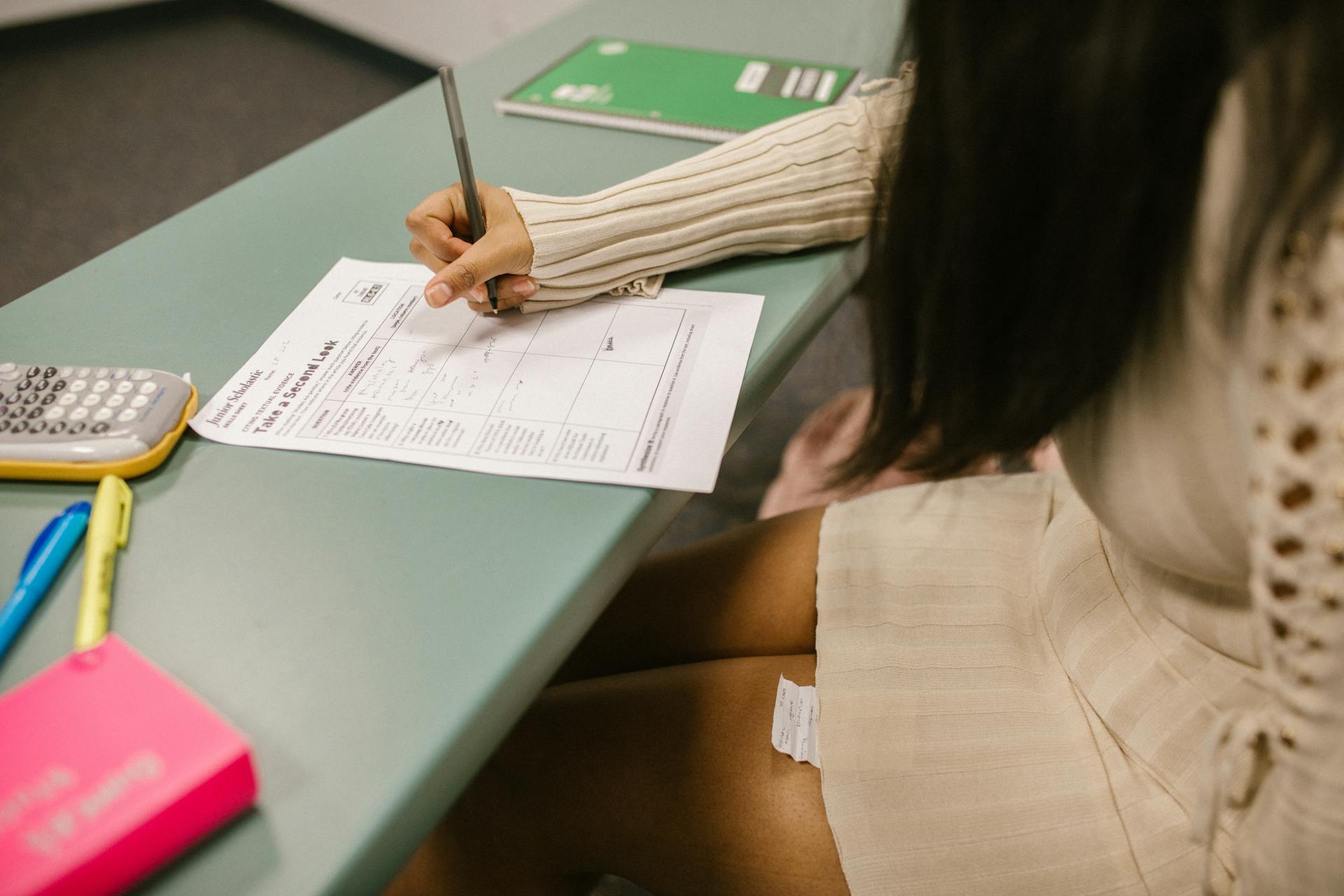
ABLE accounts are a game-changer for people with disabilities, allowing them to save and invest money without losing their Supplemental Security Income (SSI) benefits.
To be eligible for an ABLE account, you must have a disability that occurred before age 26, as defined by the Social Security Act.
If you're receiving SSI benefits, you can contribute up to $14,000 per year to an ABLE account, tax-free.
Discover more: How Often Does Ssi Check Your Bank Accounts
What Is an ABLE Account
An ABLE account is a special type of savings account designed for individuals with disabilities. You can only open an account through a state-designated program or institution.
To qualify for an ABLE account, you must have a disability that began before you turned 26, and it must meet SSA disability standards. You can self-certify your disability, but you'll need documentation from a doctor to verify it.
If you're receiving benefits like SSI, SSDI, or Medicaid based on your disability, you automatically qualify for an ABLE account. You can also qualify if you meet Social Security's definition of significant functional limitations and have a letter of certification from a licensed physician.
Readers also liked: Is Google Meets Hipaa Compliant
You can only have one ABLE account, and the money in it can be used for disability expenses over your lifetime. Contributions to an ABLE account aren't tax-deductible at the federal level, but some states may offer an income tax deduction.
Here are the key eligibility requirements for an ABLE account:
- You must have a disability that began before you turned 26.
- You must meet SSA disability standards or have a letter of certification from a licensed physician.
- You can only have one ABLE account.
- Contributions to the account are limited to the IRS annual gift tax exclusion amount.
The first $100,000 saved in an ABLE account is exempt from the $2,000 SSI individual resource limit.
Opening and Managing an Account
You can only open an ABLE account through a state-designated program or institution, and you can only have one account at a time. This means you can't open multiple accounts in different states.
To qualify for an ABLE account, you must have a disability that began before you turned 26 and meets SSA disability standards. If you receive benefits like SSI, SSDI, or Medicaid, you automatically qualify. Otherwise, you can self-certify with a doctor's letter showing your disability meets SSA standards.
Recommended read: Can I Open an Able Account at a Bank
You can have another person, like a parent or guardian, help manage the account if you need assistance. Contributions to an ABLE account are not tax-deductible at the federal level, but some states may offer an income tax deduction for contributions.
Here's a quick rundown of the rules for opening and managing an ABLE account:
Opening an Account
To open an ABLE account, you can only do so through a state-designated program or institution. You can't open multiple accounts in different states.
You can only have one ABLE account. If you're a parent or guardian, you can help manage the account, but you can't have multiple accounts for the same beneficiary.
To qualify for an ABLE account, you must have a disability that began before you turned 26 and meets SSA disability standards. This means you must have a condition that causes "marked and severe functional limitations" or be on Social Security's List of Impairments.
Additional reading: How to Set up an Able Account
You can "self-certify" your disability if you don't receive disability-based benefits, but you'll need documentation from a doctor to verify your condition. This documentation must show that your disability meets SSA standards.
Here are the main rules for opening an ABLE account:
- You can only open an account through a state-designated program or institution.
- You can only open one ABLE account.
- You must have a disability that began before you turned 26 and meets SSA disability standards.
Account Deposit Limits
The total annual contributions to an ABLE account can't exceed $18,000, and this amount may be adjusted periodically to account for inflation.
You can contribute up to $19,000 from any source, including family and friends, your benefits, and other unearned income. Additionally, if you have a job, you can contribute another $15,060 from your own earned income.
There's a limit on the total amount in your account, which varies by state, typically ranging from $200,000 to $500,000.
Here's a breakdown of the two limits on how much can be put in an ABLE account in a calendar year:
Keep in mind that these limits can add up to a maximum of $34,060 per year, but only if you earn $15,060 or more. If you earn less, the amount you can contribute will be lower.
Eligibility and Rules
To be eligible for an ABLE account, you must have a disability that began before you turned 26. You can be over 26, but must have had an age of onset before your 26th birthday.
You can only open one ABLE account, and it must be through a state-designated program or institution. You must also have a disability that meets SSA disability standards.
If you're already receiving benefits under SSI and/or SSDI, you're automatically eligible. Otherwise, you'll need to meet Social Security's definition and criteria regarding functional limitations and have a letter of disability certification from a licensed physician.
Here are some examples of disabilities that may qualify you for an ABLE account:
- Blindness
- Conditions on Social Security's List of Impairments
- Conditions on Social Security's List of Compassionate Allowances Conditions
Keep in mind that the first $100,000 saved in an ABLE account is exempt from the $2,000 SSI individual resource limit.
ABLE Account Eligibility
To be eligible for an ABLE account, you must meet certain requirements. You must have had a disability with an age of onset before your 26th birthday.
If you receive benefits under SSI and/or SSDI, you're automatically eligible to open an ABLE account. This is because these programs use the Social Security Administration's (SSA) disability standards.
You don't have to be younger than 26 to be eligible, though. You can be over 26, but you must have had an age of onset before your 26th birthday.
To open an ABLE account, you can only go through a state-designated program or institution. You can only have one ABLE account, and it's not possible to open accounts in more than one state.
You must have a disability that qualifies for an ABLE account and began before you turned 26. This means your disability must meet SSA's disability standards.
If you receive benefits like SSI, SSDI, Childhood Disability Benefits (CDB), Medicaid (based on your disability), or the Medicaid Buy-In for Workers with Disabilities, you qualify for an ABLE account because these programs use SSA's disability standards.
If you don't receive disability-based benefits, you can "self-certify" that your disability meets SSA's standards. This requires documentation verified by a doctor that shows your disability causes "marked and severe functional limitations."
Here are some benefits that automatically qualify you for an ABLE account:
- SSI
- SSDI
- Childhood Disability Benefits (CDB)
- Medicaid (based on your disability)
- The Medicaid Buy-In for Workers with Disabilities
Spending Money Rules
You can use your ABLE account to pay for daily living expenses, education, housing, transportation, and health care, among other things. These expenses can include things like rent, electric bills, and gasoline.
To qualify, the expense must be related to your disability and help improve your health, independence, and quality of life. Some examples of qualified disability expenses include education, employment training and support, and assistive technology.
You can use a debit card linked to your ABLE account to make purchases, or write checks or withdraw cash for certain expenses like rent. Just make sure to keep receipts for all your expenses, as you'll need to show them if you're audited by the IRS.
Here are some specific examples of qualified disability expenses:
Remember, you can't just hold onto the money in your ABLE account or put it into a regular bank account – you need to spend it on qualified disability expenses to avoid affecting your benefits.
Frequently Asked Questions
What are the disadvantages of an ABLE account?
ABLE accounts have some drawbacks, including a Medicaid payback requirement and potential loss of SSI benefits, which may impact beneficiaries and their families
Can you put SSI into an ABLE account?
Yes, SSI benefits can be deposited into an ABLE account. Learn more about how to manage your SSI benefits in an ABLE account
Can you buy groceries with an ABLE account?
ABLE account funds can be used to pay for groceries, among other qualified disability expenses, tax-free
Featured Images: pexels.com


